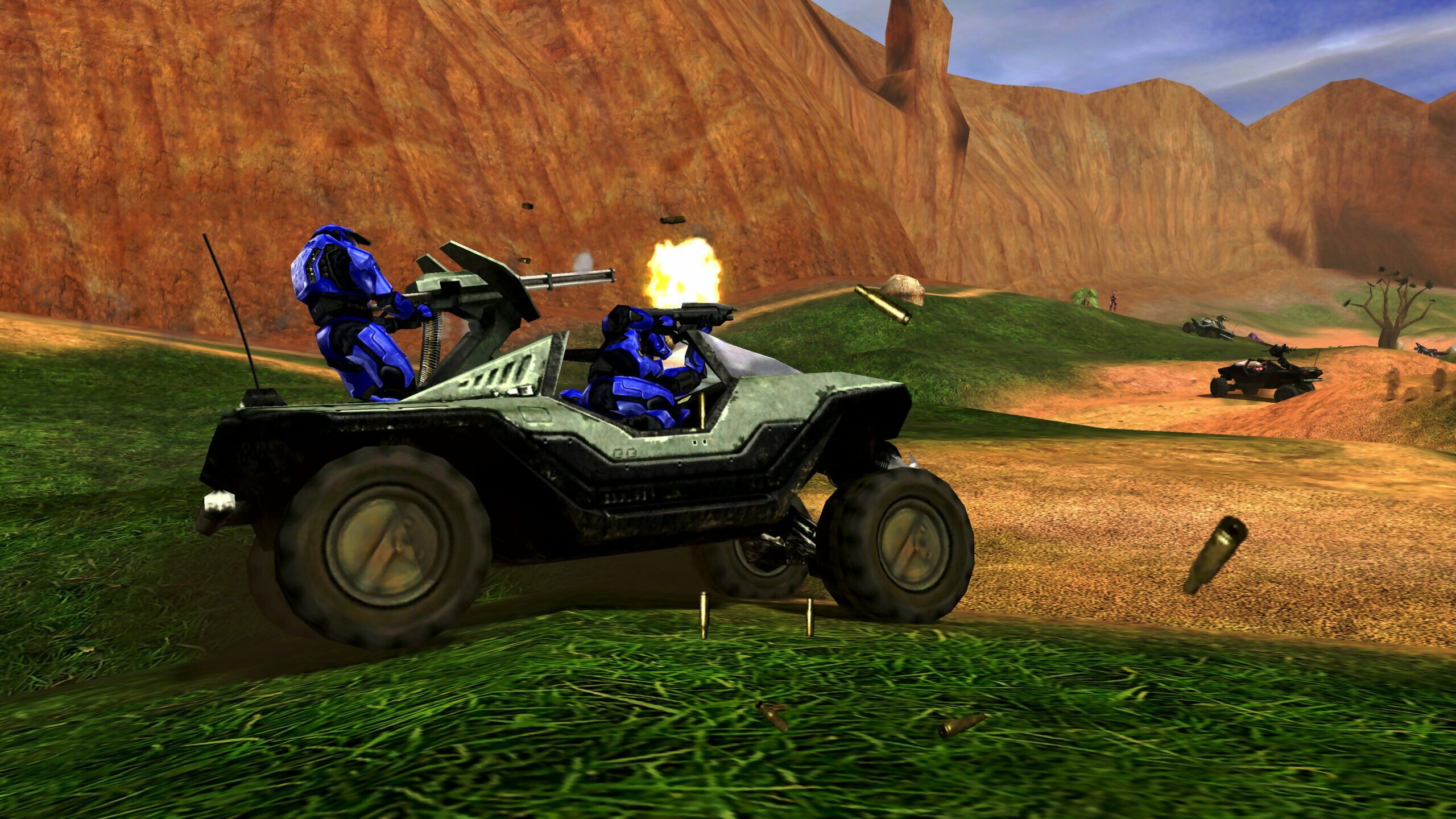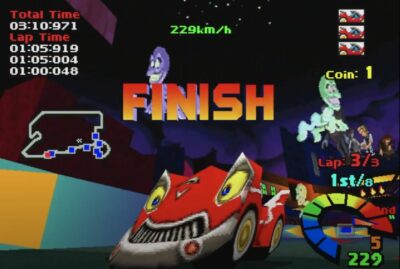
While the fundamentals behind creating multiplayer levels are the same as single-player maps, there are some additional key factors that you’ll need to consider. These tips build on the advice given in last issue’s article on single-player level design (which you can download from wfmag.cc/issues if you missed it), so I’d suggest reading that first.
WHO’S PLAYING?
Just as when you create a single-player level, you should understand your goal for your new map. But with multiplayer levels, rather than your goal revolving around introducing a new mechanic or plot point, you’re looking to ensure the level delivers the style of gameplay you have in mind. Will this level revolve around long-range sniping or cramped tunnel battles? Will it feature death pits, or shadows for sneaking about? Or maybe it will feature a central gimmick, like the ‘call in an air strike’ button in Half-Life’s Crossfire map.
As part of deciding the gameplay your level will focus on, you should consider the audience that will be playing it. We can broadly sort players into two groups here: ‘hardcore’ competitive, and fun-focused ‘casual’ players. Of course, it’s great if you make a map that can cater to both types of player, but that takes a blend of careful planning, huge amounts of playtesting, and a little luck, so it’s usually best to aim at one type or another with each map.

Being able to think and fight in multilevel 3D environments gives Call of Duty maps a high skill cap, supporting a hardcore, competitive audience.
A competitive audience needs its maps to ensure that winning comes down to player skill and tactics, not luck, and will frown on fun or silly gimmicks that disrupt play. On the other hand, this focus on pure competition can be too intense for casual players just looking to mess about with their buddies. You can see the difference by comparing 1999’s Quake III Arena and Unreal Tournament. Quake’s levels were all abstract environments purely designed around sight-lines and movement, where Unreal also found space for fun but less ‘pure’ maps set on galleons and spaceships, or levels with low gravity.
ALSO CONSIDER…
Beyond aiming for casual or competitive play, you should take into account factors like the number of simultaneous players you’re aiming for and the pace of the level’s gameplay. The larger and more complex your level’s layout, the more you require players to memorise routes and the more tense it becomes (because open environments make it easy to spot an opponent and head for them, while twisted locations force players to hunt each other).
A related point is how much cover your level features. This includes ‘visual cover’ (clutter that makes it hard to spot an opponent) and ‘hard cover’ (things that block shots and can be hidden behind). Areas with no cover will favour sniping, visual cover can make it easier to sneak up on opponents, and lots of hard cover increases the effectiveness of explosive weapons.
Be sure to take your game’s central mechanics into account when designing levels, such as Titanfall’s wall running or Splitgate’s portals. Another example is that Call of Duty’s multiplayer levels tend to feature 70 percent outdoor environments to 30 percent indoor, as this suits its focus on aerial killstreaks. More broadly, you’ll want to have played the game a lot so you can take its movement and aiming idiosyncrasies into account with your map. For example, Counter-Strike’s high weapon recoil encourages players to stop and fire, while the deadliness of Call of Duty’s weapons often means stopping to shoot gets you killed.

Dave Johnston’s Counter-Strike map Dust and its sequel have been incredibly popular for over 20 years. You can read about its creation at wfmag.cc/making-dust.
LEVEL STRUCTURE
The initial steps of creating a multiplayer map are much like a single-player one; you sketch out some distinct areas (which I’ll be calling ‘arenas’) and work out how they connect to each other on paper, then move into blocking out the level directly in the editor. Rather than stringing your map together along a central path like a single-player level, though, how you lay out its arenas will dictate the tactics your players can employ and therefore how the map plays.
Fast, non-stop action levels may only have a single arena, with everyone visible pretty much all the time. A fantastic example of this is Unreal Tournament’s Facing Worlds, with players trying to cross the deadly open ground between two sniper towers. However, this sort of map is too simple for long-term competitive play as that favours more complex maps which have room for players to learn a range of approaches and tactics. You can move your map in this direction by adding more arenas, each connected to the others in one or more ways (more on map traversal later).
As mentioned, adding more arenas will obviously allow your map to cater for larger player numbers, but also forces players to study the level’s layout and learn the best routes to get about. You can help with navigation by making each arena visually distinct, so when players spawn, they immediately know where they are.
Also, forcing players to move around is key if you want to avoid them ‘camping’ from a safe location (which makes your map boring if everyone is doing it). To keep players moving, you can ensure there are multiple routes into each arena so that campers don’t know where to look. Also, you can place ammo and other pick-ups in the sections connecting the arenas so that players have to keep shifting between fighting and rearming. High-level competitive play can revolve around players locking down a level’s key weapons (by counting how long it takes the weapon to respawn and ensuring they’re in place to grab it), so consider whether to enhance or tone this down by making it easy or risky for players to reach each weapon.
FLOW IS CRITICAL
While dead ends are OK in single-player levels (though providing a Dark Souls-style shortcut back to the action is preferable), they’re rare in multiplayer environments. This is because rather than a sequence of areas A to B to C, multiplayer levels rely on a strong, looping flow. Your goal is to ensure that as players move into an area, they have clear options for which direction to go next, without ever running into a dead-end and having to stop and turn around. There are exceptions – such as placing a powerful weapon in a dead-end that may turn out to be a trap for anyone who risks going in to get it – but in general, you want players to know where they are and what their options are for moving forward. This also means multiplayer levels shouldn’t be wildly complex, as getting lost in a sprawling environment again robs players of being able to plan their next move.

An old classic, Quake’s DM4 is a tight, fast-paced duelling map where audio cues can tell you exactly where your opponent is.
Consider how players will traverse your level beyond simply walking everywhere. Waiting for lifts to arrive or doors to open leaves players stalled for a few seconds, but can lead to surprises when an opponent is suddenly revealed. Ladders leave players vulnerable when climbing them, and repeatedly jumping to traverse big ‘steps’ can get annoying. As an example, Quake III Arena ensured players were always moving by prioritising bounce pads and teleporters over ladders and doors, culminating in The Longest Yard map, which revolved around bounce pads versus rail guns.
TEAMPLAY
Multiplayer gameplay can encompass free-for-all and team-based deathmatches, but also objective-centred modes like capture the flag. Levels for the latter can either be symmetrical – so you build half a level and then mirror it – or not, meaning each team’s half is unique. Asymmetric levels are more interesting as players need to learn the best approaches when they’re on team A and team B. Asymmetric maps, however, are much more difficult to balance, needing a lot of playtesting to ensure each team has a fair chance of winning, otherwise players will get upset when forced onto what they perceive to be the ‘unfair’ side. Study Overwatch and Counter-Strike levels for good and bad examples of asymmetric level design, with some maps suffering because it’s too easy for one side to lock down a critical choke point, leading to the match stalling.
The Call of Duty: Black Ops 4 level, Lockup, uses verticality to provide an asymmetric experience. One team begins on the roof, putting them in a position of power and forcing the other team to coordinate in order to get up there. Variety is provided by allowing the roof team to drop down and surprise their opponents, plus a variety of ways the roof players can be made vulnerable.

With their arena-focused combat, the recent DOOM games blend single and multiplayer level design techniques to provide tactical options for their aggressive, constantly moving combat.
REALISTIC MAPS
Lockup also demonstrates how you can replicate real locations in your level while still ensuring it plays well. New mappers often try to build their home, school, or office as a level; it’s a fun test, but these maps usually don’t play well because they lack flow. When building a real-world level, remember to aim for authenticity, not reality. Study the key features of a location and then use them to influence a strong multiplayer layout, as opposed to crippling your gameplay by trying to slavishly copy a real place.
CONCLUSION
The above might make it sound like you have to come up with a concrete plan for your level and then move through the steps to execute it, but you may find you get results by blocking out some interesting arenas and seeing what sort of gameplay emerges when you link them together in different ways. You can then go back and optimise the level towards the casual or competitive gameplay style that your new level leans towards, as if you planned it all along.
Creating a multiplayer level is pretty easy, but making a map that keeps players coming back again and again? That’s the real challenge.





